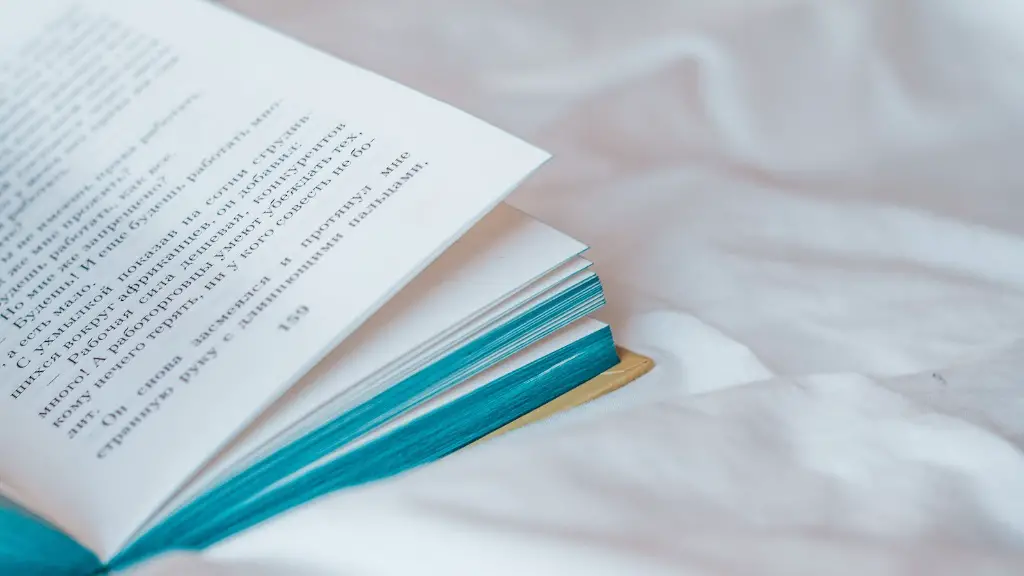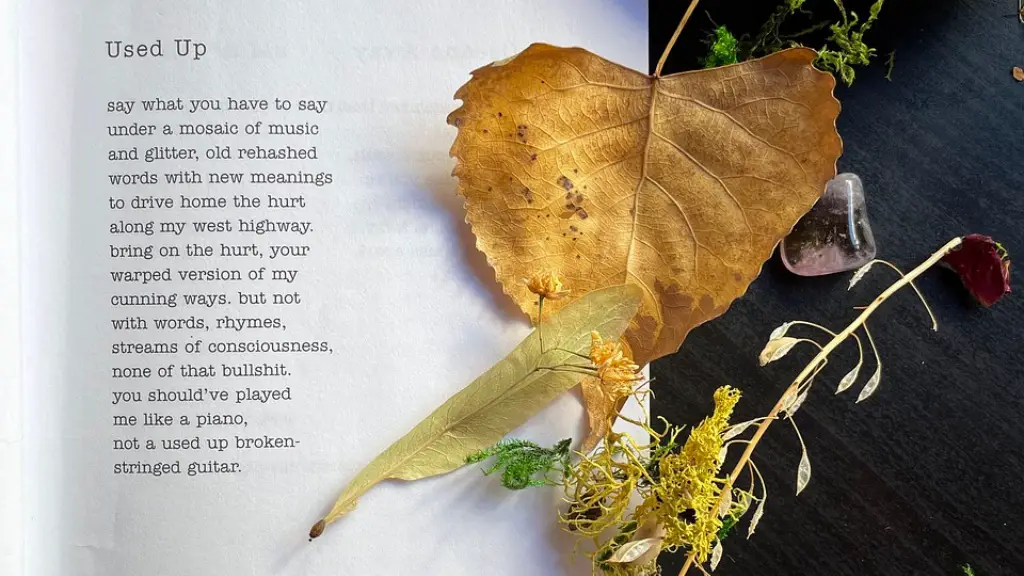What is Narrative Poetry?
Narrative poetry is a type of poetry that tells a story, often with the intent of teaching, informing, inspiring, or entertaining readers. Narrative poems usually contain characters, a conflict, and a resolution, allowing readers to draw their own conclusions and thoughts. Examples of narrative poetry include epics, ballads, sonnets, stories, and hymns.
The Background of Narrative Poetry
Narrative poetry has been around for centuries, dating back to Ancient Greece and Rome. Greek historians such as Homer told stories of gods and heroes in narrative poetry. Roman poets such as Ovid told tales of love, betrayal, and revenge in epic form.
In the Middle Ages, French and British ballads were popular. These long narrative poems told stories of kings, battles, and romantic love. In the Renaissance, English poets such as Shakespeare and Spenser used narrative poetry to tell stories of love and tragedy.
In the 19th century, American poets such as Walt Whitman and Langston Hughes used narrative poetry to express their feelings of oppression and inequality. African American authors wrote stories in slavery narratives, a type of narrative poetry that told tales of the struggles of African American people.
The Benefits of Narrative Poetry
Narrative poetry can be a powerful tool for storytelling and teaching. It encourages readers to think about the stories contained in the poem, often prompting them to reflect on their own lives and experiences. Narrative poems can also encourage readers to have empathy for others and help them realize that their own circumstances are not unique.
Narrative poetry can also be very entertaining. It can be used to illustrate a point or tell a funny or tragic tale. It can be used to convey important messages in a creative way that can hold the reader’s attention and be more memorable than more traditional forms of writing.
The Different Forms of Narrative Poetry
Narrative poetry can take many forms, but there are a few common types. The most popular is the epic, a long narrative that tells the story of a heroic journey. Epics often contain supernatural characters, conflicts, and portray important events. Examples of epics include “Beowulf” and “The Iliad.”
Ballads are narrative poems that tell stories of love, tragedy, and adventure. They contain characters, plot points, and often a resolution. Examples of ballads include “Barbara Allen” and “Lord Randal.”
Sonnets are narrative poems that focus on one story or theme. They often tell stories of love or loss, but can be about any topic. Examples of sonnets include “Shall I Compare Thee to a Summer’s Day?” by William Shakespeare, and “Let Me Not to the Marriage of True Minds” by John Donne.
Stories are more like short stories than traditional narrative poems, but they often contain the same elements such as characters, plot, and conflict. Examples of stories include “The Miller’s Daughter” by Robert Burns, and “The Myth of Zulan” by Alejandro Yoxal.
Hymns are poems that are often used in religious services. They usually focus on praise and devotion, but can also tell stories. Examples of hymns include “A Mighty Fortress is Our God” and “Joyful, Joyful We Adore Thee.”
The Interpretation of Narrative Poetry
Narrative poetry can be interpreted in many different ways. It can be seen as a reflection of the author’s experiences and emotions or a way to express ideas and values. It can be seen as a tool for teaching, conveying an important message or teaching a moral lesson.
Interpreting narrative poems often requires careful consideration of the poem’s purpose, structure, and use of language. Different techniques, such as close reading and symbol analysis, can be useful in understanding what the poem is trying to say.
The Art of Writing Narrative Poetry
Writing narrative poetry can be a challenging but rewarding experience. The first step is to find a topic or story to write about. After deciding on a subject, the poet should think about what kind of narrative poem they want to write – an epic, ballad, sonnet, story, or hymn.
The next step is to brainstorm ideas and do research on the protagonists, setting, and conflict. The poet should consider the language they want to use, and decide on a structure for the poem.
Once the initial planning is done, the poet can begin writing the poem. They should keep in mind the structure and ideas that they have chosen, and focus on detailed descriptions, emotional triggers, and engaging language.
Re-Interpreting Narrative Poetry
Re-interpreting narrative poetry is a great way to explore different meanings and themes in a poem. A different perspective can help to shed light on aspects of the poem that may have been missed or overlooked.
It can be useful to start by looking at the poem from a different point of view, such as that of the protagonist. This can help to reveal different layers of meaning in the poem, and to consider different interpretations.
It can also be helpful to look at the poem through a literary lens, such as analyzing the symbolism or use of rhetorical devices. By exploring the language and structure of the poem, it is possible to uncover different interpretations.
Exploring Different Genres of Narrative Poetry
Exploring different genres of narrative poetry can be a great way to expand a poet’s repertoire. Different genres of narrative poetry have different rules, conventions, and themes, which can be exciting to explore.
Poets can explore the different types of narrative poetry to discover which genres most appeal to their particular style and voice. Exploring different genres can be a great way to learn new techniques and to expand the poet’s creative repertoire.
Using Narrative Poetry in Education
Using narrative poetry in education is an effective way to teach various topics. Reading poetry can help to develop empathy, inspire creativity, and encourage critical thinking.
Narrative poetry can also be used to help teach different subjects from science and history to language and literature. Poems can be used to explain complex topics in an engaging and accessible way.
Using narrative poetry in the classroom can be beneficial for both teachers and students. It provides a unique way for students to learn, and can be a powerful tool for teaching.
Conclusion of Narrative Poetry
Narrative poetry is a powerful and versatile form of writing. It can be used to tell stories, express emotions, convey important messages, and educate readers. It can be used in a variety of genres and literary settings, from epics and ballads to sonnets and stories.
Understanding narrative poetry can be a complex and rewarding experience. Different interpretations can enrich readers’ understanding of the poem and help them gain a greater appreciation of the narrative poem. Exploring different genres of narrative poetry can be a great way to expand a poet’s repertoire, and it can also be used to teach important topics in the classroom.


